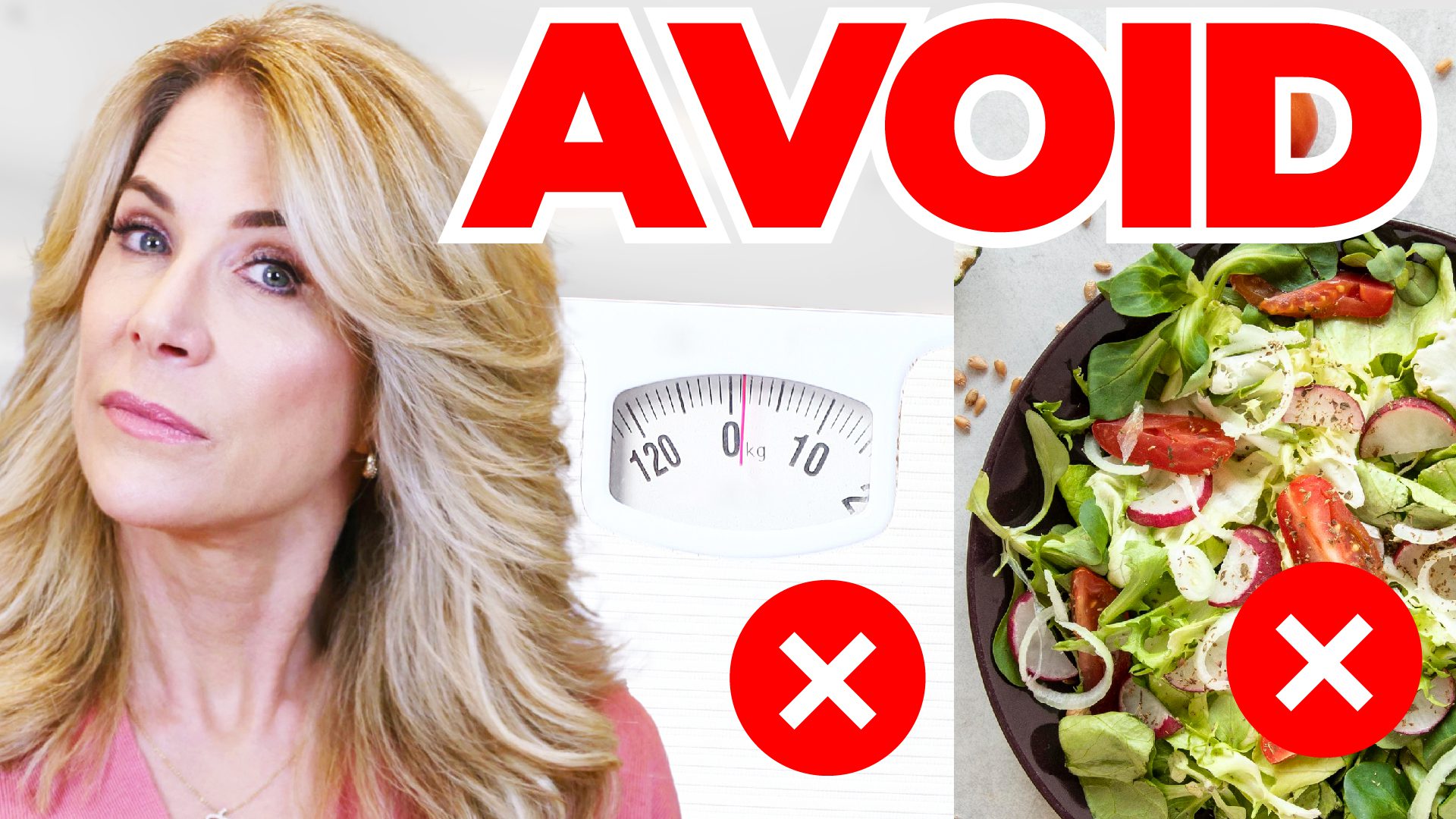Science-Backed Strategies for Maximum Fat Loss
In this episode, I dive into the science of cardio for fat loss and reveal the most efficient strategies to help you get the results you desire without wasting time on ineffective routines. Whether you’re spending endless hours on the elliptical with little to no progress or you’re just starting your fitness journey, this episode is packed with actionable tips tailored just for you.
We’ll explore why not all body fat is created equal and how this impacts your health, focusing on the difference between subcutaneous and visceral fat. Learn why a simple calorie deficit isn’t enough to target stubborn belly fat and discover specific strategies to combat belly fat effectively. Plus, learn how to optimize your resting metabolic rate and about the role of diet and exercise in maximizing your fat-burning potential.
I’ll share my personal routine and how I’ve managed to stay fit and energized, emphasizing the importance of tracking steps and adding intensity to your workouts. From using tracking devices to setting achievable goals like 8,000-12,000 steps a day, you’ll get practical advice to incorporate into your daily life. Bonus points for those evening walks after dinner that not only aid digestion, but also improve your sleep!
Timestamps
00:01:23- Types of Body Fat: Clarifying the differences between subcutaneous fat and the more dangerous visceral adipose tissue.
00:02:14- Boosting Metabolism: Discussing three factors that impact metabolism and how to optimize them, including the importance of resistance training.
00:04:03- Benefits of Walking: Highlighting studies showing the weight loss and health benefits of achieving daily step goals, emphasizing 10,000-12,000 steps.
00:07:00- Impact of Sugar and Alcohol: Explaining how sugar, fructose, and alcohol intake affect visceral fat and liver health.
00:08:01- Stress and Sleep: Discussing how stress and lack of sleep contribute to increased visceral fat and offering strategies to mitigate these effects.
Resources Mentioned in this episode
7-Day Eat Protein First Challenge
Download my free Resistance Training Cheat Sheet
Download my FREE Best Rest Sleep Cheat Sheet
Study: Effects of a 10,000 Steps per Day Goal in Overweight Adults
Study: Stress-induced cortisol response and fat distribution in women
Study: Change in sleep duration and visceral fat accumulation over 6 years in adults
Episode Sponsors:
Try Timeline. Use code JJ10 for 10% off all products
Try Qualia Senolytic backed by a 100 day money back guarantee, and use promo code VIRGINWELLNESS to get 15% off!
Do you feel like you are spending endless hours on the elliptical and the fat just isn’t budging? I’ve dug into the science to give you the most effective way to do cardio for fat loss, so that you can get the results you want without wasting time. And I’m going to guide you through the optimal cardio strategy that maximizes fat loss, explain how not all body fat is created equal.
And what this means for your health. And by the end of this video, you’re going to know exactly what you need to do to drop that fat, especially that stubborn belly fat. So first of all, all all body fat is not the same. There’s really two types I want you to think about. There’s subcutaneous fat. That’s the fat, it’s right below the skin.
You’ve heard pinch an inch That’s subcutaneous fat. The other fat is visceral adipose tissue. This is actually the damaging fat. While we might not love subcutaneous fat, it’s not the stuff that’s going to kill us. Now, to lose fat overall, you’re going to need to be in a calorie deficit, and we’re going to talk about that.
To lose visceral Adipose tissue. There’s actually some specific strategies that you need to deploy to get rid of that. All right, so let’s dig into that calorie deficit. Here’s the important thing to remember here. More energy flux is better for your body. What do eat more and move more.
Don’t eat less and move less. There are three things that impact your metabolism. First of all, you’ve got your resting metabolic or basal metabolic rate, and that’s how many calories you would burn at rest if you literally did nothing. Now, what impacts this? Your age, your sex, genetics. But the things that you can do to shift this are resistance training, because more muscle means a better resting metabolic rate.
Make sure your thyroid’s functioning well, and make sure you have estrogen on board, because estrogen can drop your metabolism by 10%. 200 calories a day. So having a humming basal metabolic rate is important and this is about 50 to 60 percent of your overall calories. Next up is digestion. This is called the thermic effect of food.
It accounts for about 5 to 10 percent of your overall caloric expenditure each day. How do you push this down? You make sure that you are eating protein first and getting the optimal amount of protein in for your body because protein is the most thermic of all of the macronutrients. And then finally, activity.
Now, when I say activity, I’m looking at exercise and activity. And this is about 15 to 30 percent of your overall calorie expenditure each day. Obviously, we want to push it to more like 30%. Now, activity is very modifiable. Use a tracking device. I like to use an Oura Ring. You can use an Apple Watch.
You could use a Fitbit or a Garmin. But what you’re going to do is connect that up to your phone and you’re going to monitor how many steps you move each day. Track it for a week and see what your average is per day over the week. So every day, add them up, divide by seven, you got your average. Your goal is to get this number to 8, 000 to 12, 000 or more.
But 8, 000 should be your floor. And 12, 000 should be your stretch goal. This is your first step. Bonus points. We want to get in some of that walking after you eat. Why? Especially in the evening. It’s going to improve digestion. It’s going to lower blood sugar response. It’s going to help you sleep better.
Now, I’m going to give you some stuff to really lock this in. They did a study where they gave Obese and overweight adults, a goal of 10,000 steps per day. And what they found was it actually resulted in significant weight loss. It lowered their body mass index. It lowered their body fat percentage. It dropped their waist and hip circumferences in 36 weeks.
Now, another one had a daily goal of 12,000 steps. And what they found with this one is that they had improved hip circumference visceral fat tissue, that whole adipose, visceral adipose tissue went down and lipid profiles went down as well. And then there was another walking program with 10,000 steps that was done over 12 weeks that showed reduced anxiety, depression, anger, fatigue, confusion, body weight, waist circumference, and body fat percentage.
There’s study after study showing how well this works. I’m going to tell you one other cool study and then why this is the next piece I add. There was a Study where they looked at three groups, control group, okay, we’ll put that to the side. They had the walking group and then they had the walking with intensity group.
And they had them walking 12, 000 steps a day. But the walking with intensity, three times a week, they said, hey, for 30 minutes, just push your intensity. And that group had even better results. Better results in terms of their body composition, fat loss, etc. You do your 8 to 12, 000 steps. Now you know your 8, 000 is your floor non negotiable.
I literally will do this every single day. If I’m traveling or something where I’m like, shoot, I’m only at 5 I do whatever it takes to make sure I get to that 8, 000 minimum. But really my goal is 12, 000 or more. Once you’ve got that in, here’s the next step. Add some intensity. How do you add some intensity into that?
You can do the simplest thing is a rucking vest. So you can do that. You can add in maybe some jogging. You can add in some hills. You can speed up your walk. Anything you can do to add the intensity in. What we can also do there that can help with some of this visceral adipose tissue and help with overall calorie burn is also add in a little bit more intensity there as well.
So let’s say that you’re walking every day. Maybe you can go out and in your walks, add in some sprints, right? Push as hard as you can and then recover and push as hard as you can and recover. What we know is that when you add in some of that intensity, it can be really good for dropping overall body fat.
Now let’s dig more into visceral adipose tissue because we’re talking about how to use cardio to lose fat. But if you specifically really want to target that visceral adipose tissue, you’ve got to go beyond just the cardio piece of it. Turns out there’s a couple things that also impact this.
Number one is sugar and fructose and alcohol. Number two are stress and sleep. So let me first unpack the sugar fructose alcohol. There was actually a study done in 2017 where fructose intake was restricted for nine days with obese children and they decreased their liver fat. Again, this was. Just nine days from 7.2 percent to 3.8 percent and their visceral fat volume decreased from 123 centimeters to 110 centimeters in nine days. That’s crazy that you could have that kind of an impact on visceral fat. and liver fat. There’s been several studies showing that people who have more added sugar in their diet actually have more visceral adipose tissue as well.
Similarly with alcohol, there was a study of a thousand men that showed that alcohol consumption is linked to more visceral adipose tissue. And after all, all of this visceral adipose tissue and liver fat, now it’s called non alcoholic liver fat, but it used to be called alcoholic. And drink alcohol and have more fat accumulation around your liver.
Organs, which of course is going to increase your risk of metabolic syndrome and all sorts of other health issues. Now, the other thing beyond sugar and alcohol that can do this is stress, because excess stress can increase visceral adipose tissue. And we know that women who are under excess stress can have a higher waist to hip ratio hip they tend to produce more cortisol when they’re stressed. So one of the things that happens is we have more cortisol receptors in our belly area. And so this is one of the things that can happen is it can make you lay down more belly fat. Sleep is also an issue for this. There was a six year study of 300 people that found that just by increasing sleep from six hours a day to seven to eight hours a day, reduced their visceral fat gain by, gain by 26 percent When I think about really getting your body to burn fat, one of the things that’s super effective, we’ve got to get into that caloric deficit with your diet, but the other really important thing here is to combine that cardio routine with strength training as well. So watch this next video where I’m going to go over exactly how to create great strength training routine, and plus you’re going to be able to get a free eight week plan to get started.
Hide Transcript

 Subscribe to our show
Subscribe to our show 


